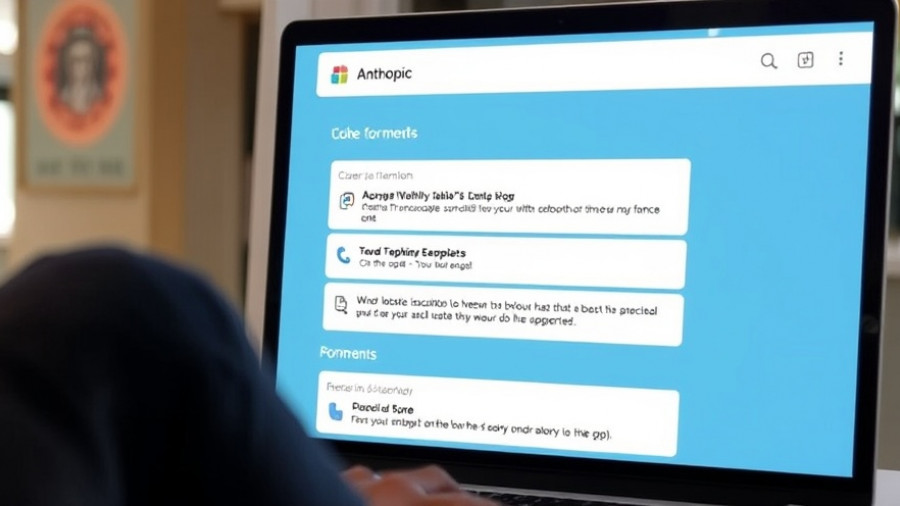
The Dangers of Data Leakage in AI: A New Frontier
On September 9, 2025, Anthropic introduced a new capability in its Claude AI assistant, enabling users to create various document types directly within chat interfaces. While this feature enhances productivity by allowing seamless document generation, it raises significant security concerns that users must take seriously. The warning from Anthropic urges users to monitor their chats closely, sounding an alarm that cannot go unnoticed.
Understanding Prompt Injection Attacks
The root of the concern lies in the feature's sandbox computing environment, which empowers Claude AI to download code and generate files. This allows not just for enhanced functionality, but potentially exposes users to cyber threats through what is known as a prompt injection attack. Such an attack could allow bad actors to manipulate Claude’s behavior by embedding harmful instructions within benign content. These instructions may lead the AI to access sensitive user data inadvertently, creating a significant vulnerability.
Why Now? The Timing of Security Concerns
As AI tools become more integrated into daily workflows, especially in business environments, the risk associated with new features like that of Claude must be weighed against their benefits. Lives and operations increasingly depend on AI-generated outputs, which is why understanding the potential for data leakage is crucial. A report released by prominent cybersecurity researchers underscored that prompt injection vulnerabilities reflect a broader, systemic flaw in AI language models, a scenario that could proliferate as these systems evolve.
What Does This Mean for Users?
The concept of “monitoring chats closely” resonates as part of a larger discussion surrounding responsibility for security in the AI realm. Users typically engage actively with these systems without full awareness of the embedded risks. Experts argue that companies like Anthropic should bear more responsibility for embedding safeguards within their technology rather than passing those expectations onto users. As AI is designed to increase efficiency, it should also come equipped with robust security measures to protect against misuse.
Comparative Insights: Claude vs. Other AI Tools
Understanding security in AI tools extends beyond Claude. For instance, OpenAI has faced scrutiny over similar vulnerabilities with their models. The discussion now shifts into how different organizations are addressing such security challenges. As businesses work towards AI integration, they must prioritize choosing platforms that offer strong security protocols alongside functional innovations. Emerging insights suggest that companies should consistently adapt to evolving threats in the AI landscape.
Advice for Safe AI Usage
For those utilizing Claude and similar AI systems, user vigilance can mitigate risks. Here are a few actionable insights for maintaining security while using AI features:
- Always review the information before sharing sensitive data in AI chats.
- Use unique identifiers rather than real data when testing AI features.
- Establish protocols for how data is handled and shared through AI.
- Stay updated on security announcements related to the tools you use.
The Future of AI: Balancing Innovation and Security
As we navigate this complex and fast-paced AI landscape, a pressing question remains: how can innovation continue while also ensuring user data integrity? The onus will likely fall not only on users to adapt but also on companies to innovate securely. As organizations like Anthropic roll out advanced features, a concerted effort towards enhancing security measures in collaboration with AI advancements is essential. A balanced approach is crucial to empower users without compromising their data security.
In an age where AI is integral to daily operations, fostering a strong connection between security and technological innovation is imperative. Understanding these new features, like the one found in Claude AI, is only the first step in navigating the future of AI-centric workflows. With vigilance and proactive measures, we can harness the benefits of AI while also guarding against its potential risks.
 Add Row
Add Row  Add
Add 




Write A Comment